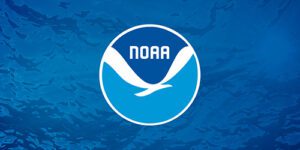
An updated research report from the National Oceanic and Atmospheric Administration (NOAA) is providing new insight into historically poor chinook and chum salmon runs in Alaska.
A report published in early December in SeafoodSource says the latest research from NOAA indicates poor diet, changes in metabolism and increases in parasitic infection are contributing to poor runs of chinook salmon in the Yukon and Kuskokwim rivers.
Those factors plus warming water temperatures are proving disastrous to salmon and people dependent on them. Scientists have observed that in warm water conditions fish typically grow faster and need more food to survive the winter. The fish are also maturing at an earlier age, resulting in them producing fewer eggs, according to the report.
NOAA has conducted surveys of juvenile chinook and chum salmon in the northern Bering Sea, on juvenile salmon between one to three years of age for over two decades. During this time, researchers have observed a steady decline in the abundance of juvenile chinooks.
While there is a clear relationship between the number of juvenile chinook salmon recorded in these surveys and the number of adults returning to spawn in the Yukon River, that situation isn’t as clear regarding chum salmon.
Research has found that environmental conditions and availability of prey where chum salmon feed in the ocean in later years also play a role in their survivability.
Scientists are also seeking thiamine deficiency in chinook salmon which has been linked to early mortality, neurological and immune impairment, poor swimming and an inability to avoid predators.
Thiamine is a vitamin of the B complex, also known as B-1, which helps the body generate energy from nutrients. It is necessary for growth and development.
